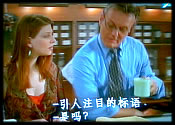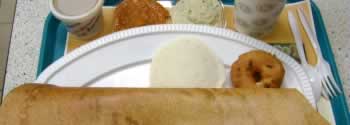The Singapore Art Museum has a very interesting show on Histories, Identities, Technologies, Spaces, with many galleries of electronic installations and net art. The exhibition is gorgeous, with lavish use of space, and it's curated with a very selective eye.

When do Web sites and hypertexts belong in art museums? A hypertext on a plinth seems beside the point, and too much concern with packaging can send us back to bibliolatry and Birkerts. Art museums sometimes seem to have lots of money (although few curators would agree!) and so might be ripe targets for exploitation by clever Web artists, but what then of people (like painters and sculptors) who really have no other hope of having their work seen, or their groceries bought?
In my case, of course, it's a blessing. I'm trying to find a distinct hypertext spirit in Singapore, and here we have a big exhibit custom-made for my research needs. It's convenient for me, but I do wonder whether this will prove, in general, the best way to spread the word.

 The Singapore Zoological gardens take the open zoo concept about at far as it can go. Lots of animals appear to be perfectly free to go wherever they want; signs indicate that they are "conditioned" to stay within appropriate parts of the zoo. This means we're walking down a concrete path, gawking at a troop of chimpanzees doing amusing chimp schtick, when ZOOP! down the path goes a little brown furry thing that turns out to be a lemur, swiming from the shrubbery. Then ZOOP! there goes another. ZOOP! ZOOP! ZOOP! ZOOP! go the rest of the gang. Way cool.
The Singapore Zoological gardens take the open zoo concept about at far as it can go. Lots of animals appear to be perfectly free to go wherever they want; signs indicate that they are "conditioned" to stay within appropriate parts of the zoo. This means we're walking down a concrete path, gawking at a troop of chimpanzees doing amusing chimp schtick, when ZOOP! down the path goes a little brown furry thing that turns out to be a lemur, swiming from the shrubbery. Then ZOOP! there goes another. ZOOP! ZOOP! ZOOP! ZOOP! go the rest of the gang. Way cool.  I've been reading a variety of
I've been reading a variety of  Buffy the Vampire Slayer is broadcast in Singapore every Tuesday night, with Mandarin subtitles.
Buffy the Vampire Slayer is broadcast in Singapore every Tuesday night, with Mandarin subtitles.




 Looking at these images, it's striking how subdued their sexual energy is. Horst and Huene were gay, and the point of fashion photography was to emphasize the dress, not the woman, but these are portraits of bodies at rest in a world in motion. It's true of the pictures of men, too; aside from one early portrait of Horst (and, perhaps, a boyish and very young Katherine Hepburn), there's nothing here with the sexual energy of Man Ray or Stieglitz.
Looking at these images, it's striking how subdued their sexual energy is. Horst and Huene were gay, and the point of fashion photography was to emphasize the dress, not the woman, but these are portraits of bodies at rest in a world in motion. It's true of the pictures of men, too; aside from one early portrait of Horst (and, perhaps, a boyish and very young Katherine Hepburn), there's nothing here with the sexual energy of Man Ray or Stieglitz.